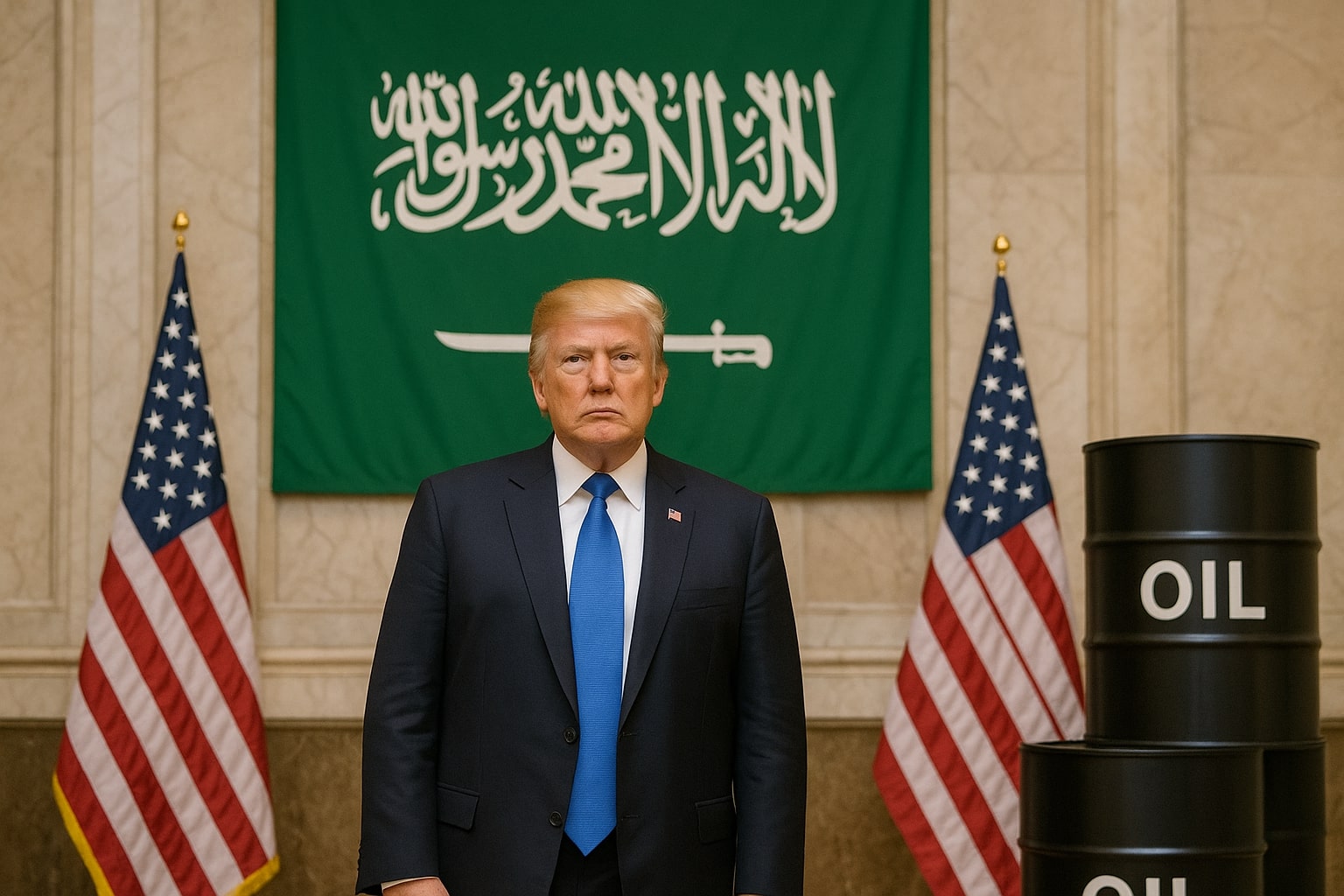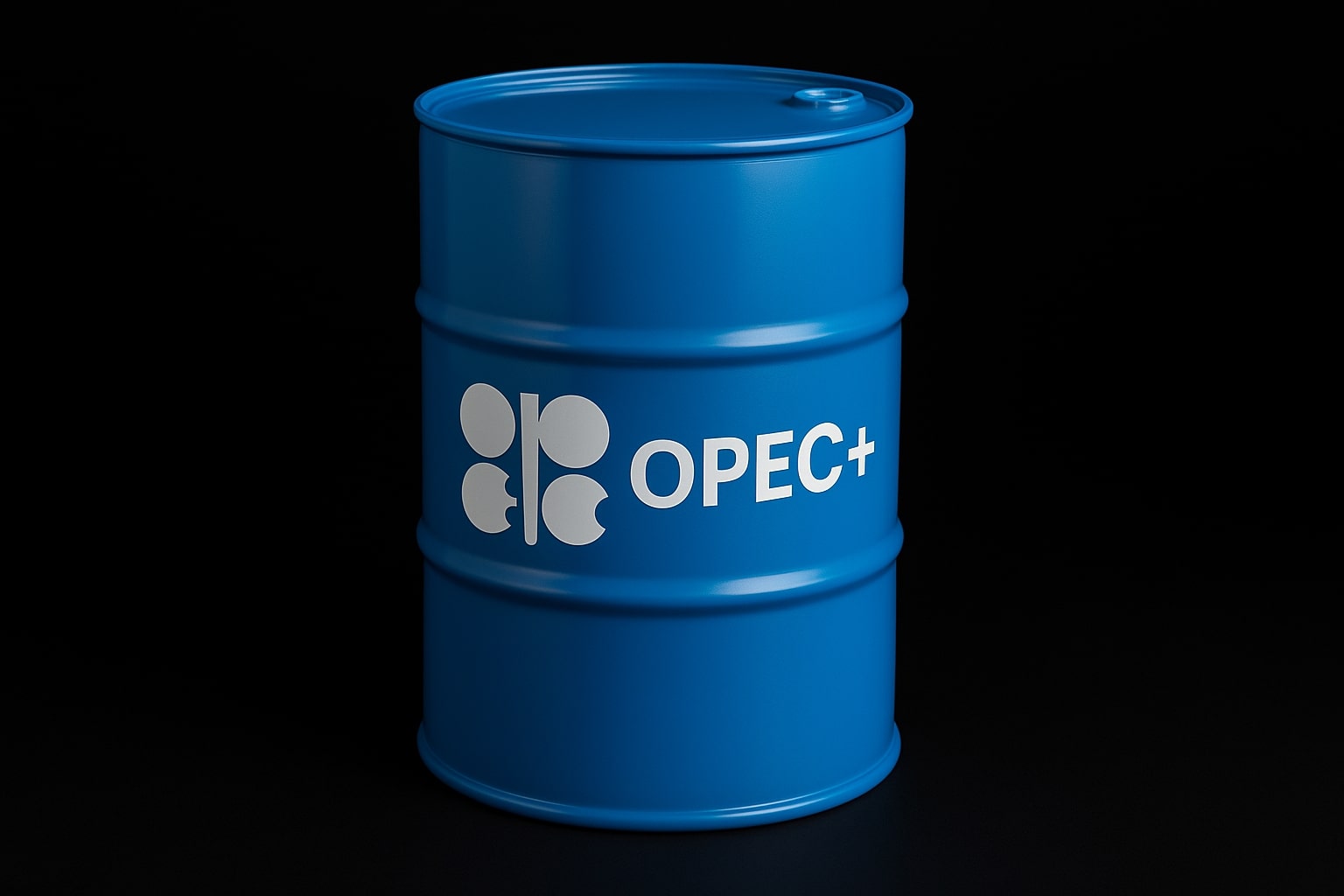
Oil Prices Fall Sharply: Is the U.S.-Iran Deal Pushing Crude Lower?
Will the potential U.S.-Iran deal ease sanctions and flood the market with Iranian oil? With Brent Crude down 3% to $64.10 and WTI slipping 3.3% to $61.10, can OPEC+ strategies and rising geopolitical tensions bring stability to the oil market, or will oversupply continue to pressure prices? | That's TradingNEWS
Oil Prices Face Pressure Amid U.S.-Iran Deal and Unexpected U.S. Crude Inventory Build
Oil prices experienced significant downward movement on Thursday, as geopolitical developments and unexpected U.S. data combined to create a perfect storm of market volatility. The most noticeable drop was in the Brent Crude futures, which fell by 3%, settling at $64.10 per barrel. Simultaneously, U.S. West Texas Intermediate (WTI) crude futures slid by 3.3%, reaching $61.10 per barrel. These declines reflect the broader sentiment of the oil market, responding to both political factors and supply data that have started to paint a challenging picture for oil traders.
Geopolitical Influences Weigh on Oil Prices
A major contributing factor to this drop in oil prices stemmed from recent statements made by U.S. President Donald Trump, who indicated that the U.S. is getting closer to securing a nuclear deal with Iran. This news sent shockwaves through the market, with many anticipating that the deal could result in sanctions being lifted from Iran. Such an outcome could potentially lead to an increase in Iranian oil exports, which would add to the current oversupply in the market. The announcement pushed oil prices lower, with analysts from PVM Oil and UBS highlighting that the U.S. crude oil inventory build exacerbated concerns over market oversupply.
Adding to the complexity of the situation, U.S. Energy Information Administration (EIA) data showed an unexpected increase in U.S. crude stockpiles. According to the EIA's report, crude oil inventories rose by 3.5 million barrels, reaching a total of 441.8 million barrels. Analysts had been expecting a drawdown of 1.1 million barrels, but the surprise build further unsettled investors, pushing prices even lower. On top of that, the American Petroleum Institute (API) reported an even larger build of 4.3 million barrels, a sign that U.S. domestic production might be outpacing demand, leading to a supply glut.
OPEC+ Moves and Rising Geopolitical Tensions Impact Oil Prices
OPEC+ has increasingly struggled with its strategy to tighten the oil market. Despite efforts to curb production, Saudi Arabia and its allies, including Russia, have faced persistent challenges due to rising production from countries outside the OPEC+ group. In a surprising turn, OPEC revised down its forecast for growth in oil supply from non-OPEC+ producers for the upcoming years. The cartel now expects a more modest increase of 800,000 barrels per day (bpd) in 2025, a downward revision from its earlier projection of 900,000 bpd.
This comes at a time when U.S. production is expected to see a significant slowdown. According to OPEC's report, U.S. crude oil production is anticipated to expand by just 130,000 bpd this year and 44,000 bpd in 2026. However, this expected slowdown is offset by an increase in OPEC+ supply, with the group planning to increase its output by 411,000 bpd in June.
Petrobras Expands Focus with Potential Return to Nigeria’s Oil Sector
In other news, Petrobras (PBR) is eyeing a return to the Nigerian oil industry after nearly a decade of absence. The company, which once operated in Nigeria’s deepwater sector, sold its assets there in the past to focus on domestic growth. However, with a $111 billion investment plan for 2025-2029, Petrobras is now looking to expand internationally again, with deepwater exploration in Nigeria as a key area of focus. Despite facing geopolitical uncertainties, Petrobras plans to direct $77 billion of its investment into exploration and production, with a portion of these funds earmarked for expanding operations in frontier regions such as Nigeria.
Meanwhile, Nigeria itself is seeking to increase its oil production, with recent moves to attract foreign investments, including a $1.5 billion commitment from ExxonMobil for deepwater development.
U.S. Dollar and Inflation Data Impact Oil Markets
The value of the U.S. dollar also played a pivotal role in the oil price movement. On Wednesday, the dollar strengthened by 0.41%, which made oil more expensive for international buyers, adding to the downward pressure on prices. A stronger dollar is traditionally viewed as a negative for commodities priced in dollars, and the rise in yields on U.S. Treasuries further supported the dollar’s strength.
Additionally, the U.S. inflation report for April showed a modest 0.2% increase, signaling that inflationary pressures were easing. This report suggested that the Federal Reserve might be less likely to implement aggressive interest rate cuts in the near future, a factor that contributed to the higher value of the U.S. dollar and the subsequent drop in oil prices.
The Road Ahead: Will Oil Prices Find Support?
Looking ahead, OPEC+ is in a delicate balancing act. While the group’s output increases have caused oil prices to stagnate, the easing of U.S.-China trade tensions and the U.S.-Iran negotiations offer some support for demand. As China has been ramping up its crude imports, with April flows at 11.69 million bpd, the world’s largest oil importer is showing robust demand despite the overall supply issues.
Moreover, as OPEC+ attempts to increase output to balance supply and demand, it faces ongoing challenges from members like Iraq and Kazakhstan, who have continued to exceed their production targets. In response, Saudi Arabia raised oil prices for Asia, signaling a shift in their strategy. Could this move mark the beginning of a recovery in oil prices as OPEC+ relinquishes its previously aggressive production cuts?
Given the mixed signals from global demand, production forecasts, and geopolitical developments, it seems likely that oil prices will continue to fluctuate in the near term, navigating between supply concerns and easing geopolitical tensions. As Brent Crude and WTI prices hover near key support levels, traders will be closely monitoring any developments in the U.S.-Iran negotiations and OPEC+ production targets to gauge the next major move in the market.
That's TradingNEWS
Read More
-
BITQ ETF Soars 66.55% as Bitcoin Blasts Past $124,000 — Crypto Equities Lead 2025 Rally
13.10.2025 · TradingNEWS ArchiveStocks
-
XRP ETFs XRPR, XRPI Slip as Ripple XRP-USD Holds $2.62 — SEC Fast-Track Could Ignite $20B
13.10.2025 · TradingNEWS ArchiveCrypto
-
Natural Gas Price Forecast - NG=F Steadies at $3.00 as U.S. Export Boom Tests Old Fields
13.10.2025 · TradingNEWS ArchiveCommodities
-
USD/JPY Price Forecast - Dollar to Yen Climbs to ¥152.28 as Japan’s Political Shakeup
13.10.2025 · TradingNEWS ArchiveForex



















